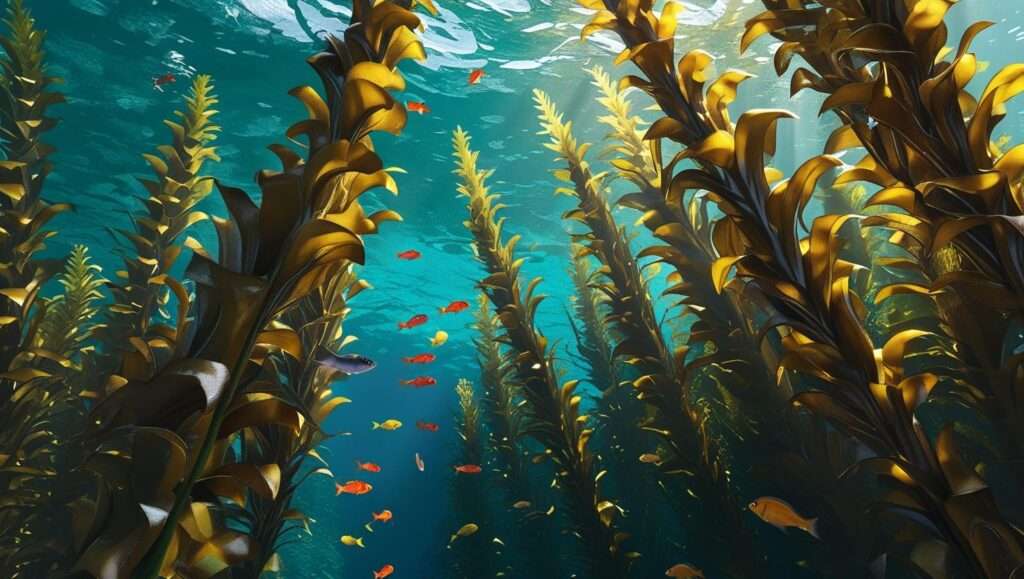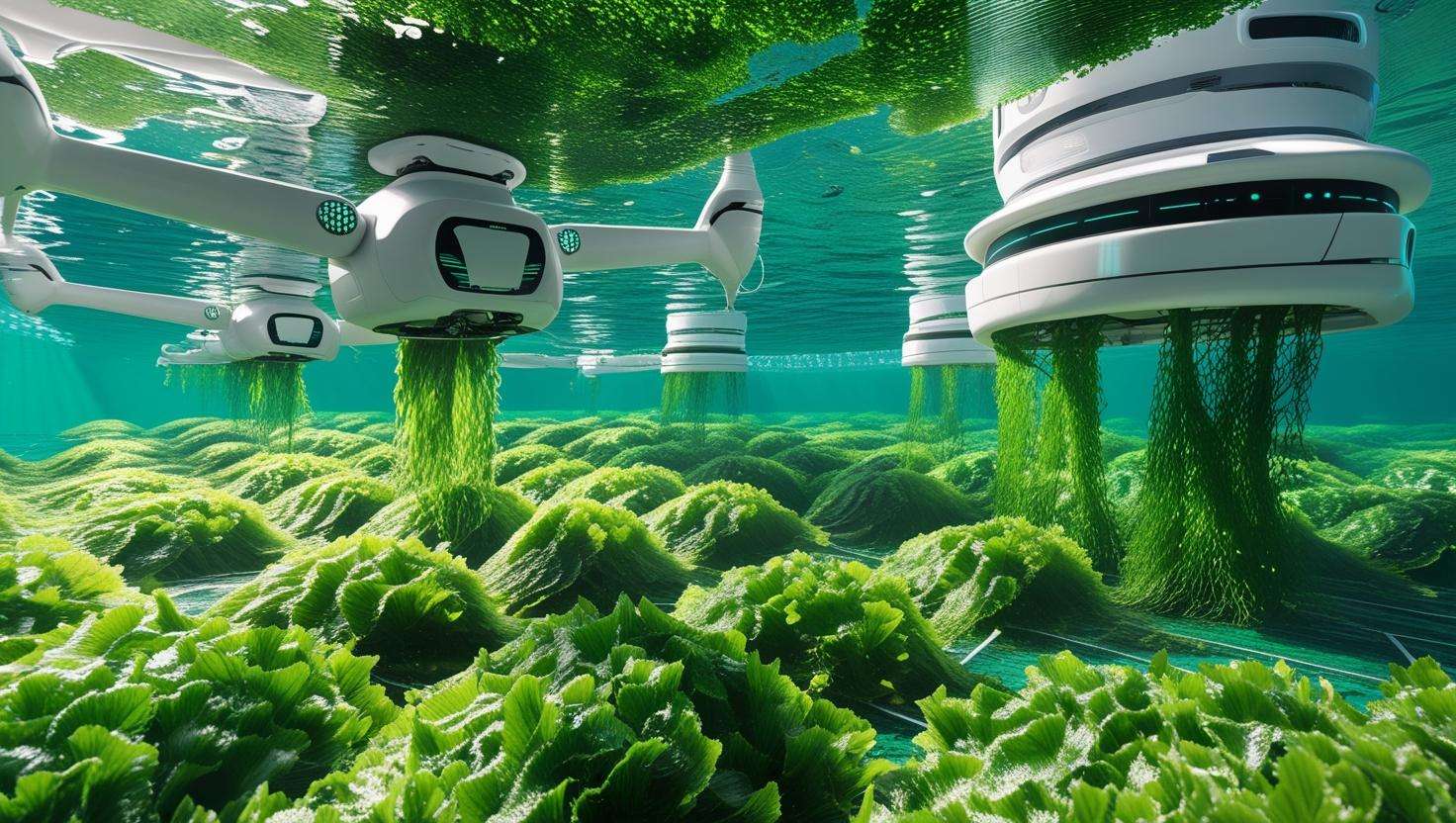
How Seaweed Farming Helps Combat Climate Change: A Sustainable Solution for Our Planet
Climate change poses a significant challenge to our planet, leading to rising temperatures, extreme weather events, and sea level rise. It is crucial for us to find sustainable solutions to combat this global issue. One potential solution that has gained attention is seaweed farming. Seaweed farming has the potential to mitigate climate change in several ways. Firstly, seaweed absorbs carbon dioxide from the water, helping to reduce the levels of this greenhouse gas in the atmosphere. Additionally, seaweed farming can help to restore degraded coastal ecosystems and provide habitat for marine life. Furthermore, seaweed can be used as a renewable source of biofuel, reducing our reliance on fossil fuels.
Table of Contents
ToggleUnderstanding Seaweed Farming
Seaweed farming, also known as mariculture, is the practice of cultivating and harvesting seaweed for various purposes, including food, cosmetics, and pharmaceuticals. This practice dates back to ancient times, with evidence of seaweed farming found in Japan as far back as the 17th century. Today, seaweed farming is prevalent in countries such as China, Indonesia, South Korea, and the Philippines. Commonly farmed types of seaweed include nori (used in sushi), kelp (used in various cuisines and as a source of alginate for industrial purposes), and wakame (used in soups and salads). These types of seaweed are highly sought after for their nutritional value and versatility in various products.
The Role of Seaweed in Climate Change Mitigation 
Seaweed is not just a simple ocean plant; it plays a crucial role in fighting climate change. 
1. Natural Carbon Absorption 
Seaweed absorbs carbon dioxide (CO2) directly from the atmosphere through photosynthesis. As it grows, it captures large amounts of CO2, which would otherwise contribute to global warming. In fact, seaweed farms can sequester CO2 up to five times faster than terrestrial forests! 
2. Ocean Carbon Storage 
When seaweed dies, it sinks to the ocean floor, carrying the captured carbon with it. This process is called “blue carbon storage.” By preventing the release of CO2 back into the atmosphere, seaweed farms help lock away carbon for long periods, acting as a natural carbon sink.
3. Reducing Ocean Acidification 
As CO2 levels rise in the atmosphere, more carbon dioxide dissolves in the oceans, leading to ocean acidification. This disrupts marine life, including coral reefs and shellfish. Seaweed, however, helps buffer this acidification by absorbing excess CO2, which supports healthier marine ecosystems.
4. Sustaining Marine Life 
Seaweed farms create vital habitats for various marine species, improving biodiversity. These underwater forests provide shelter and food for fish, shellfish, and other marine organisms. A thriving marine ecosystem is essential for balancing the health of our oceans and the planet.

5. Promoting Sustainable Food and Bioenergy 
Seaweed farming isn’t just about climate change—it’s also about creating sustainable food sources and alternative energy. Seaweed is rich in nutrients and can be used in food products, biofuels, and even as a natural fertilizer. By reducing the need for land-based agriculture, seaweed farming supports sustainable production methods that reduce our environmental footprint.
By supporting seaweed farming, we’re not only helping mitigate climate change, but we’re also contributing to a healthier ocean, a more sustainable food system, and a greener future. 
Environmental Benefits of Seaweed Farming
Reducing ocean pollution can be achieved through the absorption of excess nutrients such as nitrogen and phosphorus. This can help to improve water quality and reduce harmful algal blooms. Protecting biodiversity involves creating marine habitats and supporting ecosystems to ensure the survival of various species. Mitigating coastal erosion can be achieved by stabilizing coastlines and reducing wave energy through natural or man-made measures such as planting vegetation or building breakwaters. These efforts can help to protect coastal communities and preserve valuable natural habitats.
Socioeconomic Advantages of Seaweed Farming 

Seaweed farming isn’t just beneficial for the environment—it also offers significant socioeconomic benefits for local communities and economies. 
1. Job Creation and Economic Growth 
Seaweed farming creates new job opportunities, especially in coastal areas where employment options may be limited. From farm management to harvesting and processing, the seaweed industry provides a wide range of careers. This helps boost local economies and supports coastal communities with sustainable income sources.
2. Sustainable Livelihoods for Coastal Communities 
Coastal communities, particularly in developing countries, can greatly benefit from seaweed farming. It offers a low-cost entry into the aquaculture industry, requiring minimal infrastructure or equipment. By focusing on sustainable practices, seaweed farming can provide stable incomes, reduce poverty, and improve living standards in these regions.
3. Boosting the Blue Economy 
The “Blue Economy” refers to industries that rely on ocean resources, like seafood, tourism, and marine biotechnology. Seaweed farming contributes to this growing sector by providing a sustainable source of raw materials. Seaweed can be used in food products, biofuels, cosmetics, and pharmaceuticals, creating new markets and expanding global trade opportunities.
4. Supporting Sustainable Food Production 
Seaweed is not only a nutritious food source but also a sustainable one. It can help reduce reliance on traditional land-based agriculture, which often requires large amounts of water and land. Seaweed farming promotes food security by offering an eco-friendly alternative to conventional crops, especially in areas where arable land is scarce.
5. Reduced Environmental Costs 
By promoting sustainable practices, seaweed farming reduces the need for more resource-intensive industries, such as land-based agriculture and fossil fuels. The environmental benefits of seaweed farming—like improving water quality and reducing carbon emissions—lead to long-term savings and reduced environmental cleanup costs for governments and industries.
Seaweed farming not only helps combat climate change but also fosters economic resilience, job creation, and a greener future. 
The Future of Seaweed Farming in Combating Climate Change

The potential for growth globally in sustainable practices is significant. By integrating with other sustainable practices, such as carbon credits, we can further enhance our impact on the environment. It’s important for governments, industries, and individuals to support these initiatives in order to create a more sustainable future for generations to come. Together, we can make a real difference in protecting our planet.
Conclusion
Seaweed farming offers various environmental and socioeconomic benefits. Environmentally, seaweed farming helps to reduce ocean acidification and eutrophication by absorbing excess nutrients and carbon dioxide from the water. It also provides habitat and food for marine species, contributing to biodiversity. Socioeconomically, seaweed farming creates jobs and income for coastal communities, particularly in developing countries. It also has the potential to be a valuable source of food, feed, and biofuels. That’s How Seaweed Farming Helps Combat Climate Change: A Sustainable Solution for Our Planet. Seaweed farming is considered a sustainable and scalable solution to combat climate change due to its ability to sequester carbon and reduce greenhouse gas emissions. By advocating for awareness and investment in seaweed farming initiatives, we can help promote this environmentally friendly and economically viable industry.
Frequently Asked Questions(FAQ)
What is seaweed farming, and how does it work?
Seaweed farming involves growing different types of seaweed in the ocean, typically on ropes or nets. The seaweed absorbs carbon dioxide (CO2) from the water, acting as a natural carbon sink. As it grows, it helps reduce CO2 levels and promotes healthier marine ecosystems.
How does seaweed farming help combat climate change?
Seaweed absorbs CO2 from the atmosphere as part of its natural growth process, reducing greenhouse gases. This process helps mitigate climate change by capturing large amounts of carbon in the ocean. Seaweed farming also supports the marine ecosystem, enhancing biodiversity.
Is seaweed farming a sustainable solution?
Yes, seaweed farming is a highly sustainable practice. It doesn’t require freshwater, fertilizers, or pesticides, making it eco-friendly. It also improves ocean health by preventing ocean acidification, creating habitats for marine life, and promoting nutrient cycling.
What environmental benefits does seaweed farming provide?
Apart from combating climate change, seaweed farming offers multiple environmental benefits. It helps restore marine ecosystems, reduce ocean acidification, and protect coastal areas from erosion. It also provides a habitat for various marine species.
Can seaweed farming replace traditional land-based agriculture for climate solutions?
While seaweed farming isn’t a direct replacement for land-based agriculture, it is a complementary solution. Seaweed farming can reduce the environmental impact of agriculture by providing an alternative to land-intensive crops and supporting sustainable food production.
How does seaweed farming contribute to the economy?
Seaweed farming has economic benefits by creating green jobs and supporting coastal communities. It’s a growing industry for food production, biofuels, cosmetics, and pharmaceuticals. Additionally, it can be a source of income for coastal communities while supporting sustainable practices.
Are there any risks or challenges associated with seaweed farming?
While seaweed farming is largely sustainable, challenges include managing large-scale farms, potential competition with other marine industries, and the need for more research on long-term impacts. Additionally, climate change itself could affect ocean temperatures and seaweed growth patterns.
How can I get involved in seaweed farming?
Getting involved in seaweed farming typically requires knowledge of marine biology and aquaculture techniques. You can start by researching local farming opportunities, taking courses, or collaborating with established farms. Many countries and organizations offer grants or training programs for new farmers.



